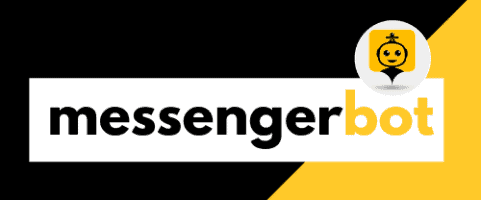In today’s fast-paced digital landscape, businesses are constantly seeking innovative ways to elevate their customer experiences and stay ahead of the competition. One powerful solution that has emerged is the integration of live agent chatbots, which combine the efficiency of AI-powered chatbots with the human touch of skilled customer service agents. By seamlessly blending these two elements, companies can provide exceptional real-time support, addressing customer inquiries and resolving issues with unparalleled speed and personalization. This cutting-edge approach not only enhances customer satisfaction but also streamlines operations, reduces costs, and fosters long-lasting brand loyalty.
What is live agent in ChatBot?
A. Live agent chatbot: Definition and key features
A live agent chatbot is an advanced conversational AI system that seamlessly integrates human support agents alongside its automated capabilities. This innovative approach combines the efficiency and convenience of chatbots with the personal touch and expertise of human representatives, offering a superior customer experience.
The key features of a live agent chatbot include:
- Seamless handoff from chatbot to human agent when necessary, ensuring a smooth and uninterrupted experience for the user.
- Access to the full context and conversation history, enabling the live agent to provide informed and personalized support.
- Human touch and empathy, allowing for more nuanced and complex interactions that chatbots may struggle with.
- Subject matter expertise, where live agents can provide in-depth knowledge and guidance on specialized topics or complex issues.
- Ability to handle unique or exceptional cases that may fall outside the chatbot’s training or scope.
B. Benefits of incorporating live agents into chatbot experiences
Integrating live agents into a chatbot system offers numerous benefits, enhancing the overall customer experience by combining the efficiency of automation with the personal touch of human interaction. By leveraging the strengths of both chatbots and live agents, businesses can strike a balance between convenience and personalization, ensuring that users receive the best possible support tailored to their specific needs.
One of the primary advantages of incorporating live agents is the ability to handle complex or exceptional cases that may fall outside the chatbot’s training or scope. Live agents bring subject matter expertise and in-depth knowledge, allowing them to provide comprehensive guidance on specialized topics or unique situations. This level of expertise is invaluable in delivering a truly exceptional customer experience.
Additionally, live agents offer a human touch and empathy that can be challenging for chatbots to replicate fully. They can engage in more nuanced and emotionally intelligent interactions, understanding context and nuance in a way that resonates with users on a deeper level. This personal connection can foster trust and strengthen customer relationships, ultimately driving loyalty and satisfaction.
Furthermore, the seamless handoff from chatbot to live agent ensures a smooth and uninterrupted experience for the user. By providing access to the full conversation history and context, live agents can pick up right where the chatbot left off, delivering personalized support without the need for repetition or frustration.

II. Are live chat agents real?
Yes, live chat agents are real people employed to communicate with customers or users through online chat platforms. These agents are tasked with providing real-time assistance, answering inquiries, and offering support to resolve issues or concerns. Many businesses across various industries, from retail to technology, utilize live chat agents as a crucial component of their customer service strategy.
Live chat agents undergo specialized training to develop strong communication skills, product knowledge, and problem-solving abilities. They are equipped to handle multiple chat sessions simultaneously, ensuring prompt responses and efficient resolution of customer queries. The role requires patience, empathy, and the ability to clearly convey information in a written format.
A. Understanding the human component of live agent chatbots
Live chat agents are indeed real individuals working behind the scenes to provide exceptional customer service. They are trained professionals who bring a human touch to online interactions, bridging the gap between digital platforms and personalized assistance.
While chatbots powered by artificial intelligence (AI) like Brain Pod AI can handle basic inquiries and routine tasks, live chat agents excel at more complex scenarios that require human empathy, critical thinking, and nuanced communication. They can pick up on subtle cues, adapt to unique situations, and provide tailored solutions that cater to individual customer needs.
Reputable companies often hire live chat agents as full-time or part-time employees, ensuring consistent quality of service and adherence to brand guidelines. Some organizations may also outsource live chat support to third-party providers or freelance agents. However, these agents are still real individuals trained to represent the company’s interests and maintain high standards of customer satisfaction.
B. Combining AI and human intelligence for optimal support
In today’s digital landscape, many businesses are embracing a hybrid approach that combines the efficiency of AI-powered chatbots with the human touch of live chat agents. This synergistic combination aims to provide the best of both worlds, delivering fast and accurate responses while maintaining a personalized and empathetic customer experience.
Chatbots, like those offered by Messenger Bot, can handle routine inquiries, frequently asked questions, and basic tasks, freeing up live agents to focus on more complex issues that require human intervention. This collaborative approach not only enhances efficiency but also ensures that customers receive the appropriate level of support tailored to their specific needs.
To enhance the credibility and authority of live chat interactions, companies may provide agents with access to knowledge bases, product manuals, and customer relationship management (CRM) systems. This ensures that agents can provide accurate and up-to-date information, as well as personalized assistance based on customer history and preferences.
III. What is a live chat support agent?
A. The role of live chat agents in customer service
In the ever-evolving landscape of customer service, live chat support agents have emerged as indispensable professionals, bridging the gap between businesses and their customers through real-time, personalized interactions. These agents are the frontline ambassadors, adeptly navigating digital channels to provide prompt assistance, resolve inquiries, and foster lasting relationships.
A live chat support agent is a customer service professional who communicates with customers in real-time through instant messaging on a company’s website, mobile app, or other digital platforms. Their primary responsibilities include providing prompt and efficient assistance to resolve customer inquiries, issues, or complaints related to products, services, or technical support.
Beyond resolving immediate concerns, live chat agents play a pivotal role in offering personalized and engaging interactions to enhance customer satisfaction and loyalty. With excellent communication skills, product knowledge, and problem-solving abilities, they navigate complex situations, addressing customer concerns effectively while representing the brand’s values and commitment to exceptional service.
B. Essential skills for effective live chat support agents
Thriving in the dynamic world of live chat support requires a unique blend of skills and attributes. Multitasking and managing multiple chat sessions simultaneously, while ensuring consistent quality of service, is a fundamental aspect of the role. Live chat agents must also adhere to company policies, guidelines, and best practices for customer service and support, ensuring compliance and consistency across all interactions.
Moreover, live chat agents play a crucial role in gathering customer feedback and insights, enabling businesses to identify areas for improvement and contribute to overall customer experience optimization. By actively listening to customer concerns and suggestions, these agents serve as invaluable resources for businesses seeking to continuously enhance their offerings and service delivery.
According to a study by Forrester Research, companies that excel in live chat support experience a 48% increase in revenue per chat hour and a 40% increase in operational efficiency. Additionally, a report by Software Advice states that 73% of customers prefer live chat for its immediacy and convenience, making live chat support agents crucial for businesses to deliver exceptional customer experiences and foster long-term customer relationships.
IV. How do I transfer ChatBot to live agent?
A. Seamless handoff from chatbot to live agent
At Messenger Bot, we understand the importance of providing exceptional customer experiences. While our advanced AI chatbot is designed to handle a wide range of inquiries and tasks efficiently, there may be instances where a human touch is required. That’s why we’ve implemented a seamless process to transfer conversations from our chatbot to a live agent, ensuring a smooth and uninterrupted experience for our users.
When a customer’s query becomes too complex for the chatbot to resolve, or if they specifically request human assistance, our system automatically initiates the transfer process. This involves disabling the chatbot interface and re-enabling our live chat window, allowing the visitor to directly message one of our knowledgeable support agents.
To ensure context and continuity, we automatically include the full chatbot conversation transcript when transferring to the agent. This allows our human representatives to quickly understand the visitor’s journey and the specific issue they are facing, enabling them to provide more personalized and efficient support.
Moreover, we have implemented intelligent routing rules that assign the chat to the most appropriate agent or team based on the visitor’s data, the ChatBot path they followed, and the nature of their inquiry. This ensures that their request is handled by an agent with the relevant expertise, further enhancing the quality of the support experience.
B. Ensuring a smooth transition for enhanced customer experiences
At Messenger Bot, we prioritize transparency and strive to make the transition from chatbot to live agent as seamless as possible. When a visitor’s request is being transferred, we notify them accordingly and provide an estimated wait time if our agents are currently occupied with other conversations. This helps set realistic expectations and prevents frustration due to prolonged waiting periods.
Furthermore, our agents have the flexibility to return the conversation to the chatbot if they determine that the issue can be resolved more efficiently through automation. This transition is handled seamlessly, ensuring a consistent and cohesive experience for the visitor.
To continuously improve our chatbot’s capabilities and reduce the need for agent escalation, we regularly analyze chatbot transcripts to identify common issues or queries that require human intervention. By expanding our chatbot’s knowledge base and refining its conversational flows, we aim to empower it to handle an ever-increasing range of inquiries independently, further enhancing the overall customer experience.
Finally, we gather valuable feedback from our customers through post-chat surveys, allowing us to understand their perspectives on both the chatbot and live agent experiences. This feedback is instrumental in identifying areas for improvement and implementing changes that better align with our users’ needs and preferences.
At Messenger Bot, we are committed to delivering exceptional customer service through a seamless blend of cutting-edge AI technology and human expertise. By prioritizing a smooth transition between our chatbot and live agents, we ensure that our users receive the support they need, when they need it, in a manner that exceeds their expectations.

V. Is Live agent free?
A. Pricing models for live agent chatbot solutions
The pricing structure for live agent chatbot solutions varies depending on the provider and the features you require. Many platforms offer both free and paid subscription plans to cater to different business needs and budgets.
For instance, LiveAgent, a popular live chat software, provides a free “Starter” plan that includes basic features like one active staff account, one website integration, and limited customization options. This free plan is suitable for small teams or individual users looking to test the platform.
However, to access more advanced capabilities and scalability, businesses may need to consider LiveAgent’s paid subscription plans, which range from the Ticket Biz plan at $15/month/agent to the Ticket Ultimate plan at $69/month/agent. These paid plans offer features like unlimited email accounts, live chat channels, social media integrations, advanced reporting, multilingual support, API access, and dedicated resources.
Similarly, other live agent chatbot providers like LivePerson and Freshworks Live Chat offer free trials or entry-level plans with basic features, while their more comprehensive plans with advanced capabilities come at a premium price.
B. Evaluating cost vs. value for businesses
When evaluating live agent chatbot solutions, businesses should carefully weigh the costs against the potential value and return on investment (ROI) these tools can deliver. While free plans may seem attractive initially, they often lack the robust features and scalability required for AI-powered customer service and support.
Paid plans, on the other hand, typically offer a more comprehensive suite of tools and integrations, enabling businesses to provide seamless customer interactions across multiple channels. Advanced features like AI-powered chatbots, multilingual support, and robust reporting can significantly enhance customer satisfaction, increase operational efficiency, and drive revenue growth.
When considering the investment in a live agent chatbot solution, businesses should factor in the potential cost savings from reduced staffing requirements, increased productivity, and improved customer retention. Additionally, the ability to provide 24/7 support and personalized experiences can give companies a competitive edge and contribute to long-term growth and profitability.
Ultimately, the decision to invest in a free or paid live agent chatbot solution should be based on a thorough analysis of the business’s specific needs, goals, and budget. By carefully evaluating the cost versus the value and potential ROI, companies can make an informed decision that aligns with their overall customer service and growth strategies.
VI. What is the main difference between a chatbot and a live chat?
A. Chatbots: Automated conversational AI assistants
Chatbots are computer programs designed to simulate human-like conversations through text or voice interfaces. They are powered by artificial intelligence (AI) and natural language processing (NLP) technologies, allowing them to understand and respond to user inputs in a conversational manner. Chatbots rely on predefined scripts, machine learning models, and programmed responses to engage with users.
At their core, chatbots are automated systems without human intervention. They excel at handling routine queries and tasks efficiently, providing quick and consistent responses based on their programming. However, chatbots have limitations in understanding complex contexts, nuanced language, and dealing with highly intricate or unique situations that fall outside their predefined knowledge base.
Some popular chatbot platforms and providers include Brain Pod AI, IBM Watson Assistant, Microsoft Teams, and Amazon Lex.
B. Live chat: Human-powered real-time support
Live chat, on the other hand, involves real-time interactions between customers and human agents. These agents possess cognitive abilities, emotional intelligence, and the capacity to comprehend context and provide personalized assistance. They can handle complex inquiries, offer empathetic responses, and navigate nuanced situations that require human judgment and problem-solving skills.
Unlike chatbots, live chat agents can engage in dynamic conversations, understand subtle cues, and adapt their responses based on the specific needs and circumstances of each customer interaction. They can provide detailed explanations, offer creative solutions, and handle escalations or exceptions that may be beyond the capabilities of automated systems.
Popular live chat solutions include LivePerson, Zendesk Chat, LiveAgent, and Intercom. These platforms enable businesses to integrate live chat capabilities into their websites, mobile apps, and messaging channels, providing real-time human support to their customers.
The primary distinction between a chatbot and a live chat lies in the presence of human intervention. Chatbots are automated conversational agents powered by artificial intelligence (AI) and natural language processing (NLP) algorithms. They rely solely on predefined scripts, machine learning models, and programmed responses to engage with users. In contrast, live chat involves real-time interactions between customers and human agents. These agents possess the cognitive ability to comprehend context, provide personalized assistance, and handle complex inquiries beyond the scope of predetermined responses. Chatbots excel at handling routine queries efficiently, while live chat agents offer a more nuanced and empathetic approach, adept at resolving intricate issues that require human judgment and emotional intelligence. Gartner and IBM emphasize the complementary roles of chatbots and live chat in delivering seamless customer experiences by leveraging the strengths of each technology.
VII. LiveAgent: A Comprehensive Live Chat Solution
A. Key features and capabilities of LiveAgent
LiveAgent is a robust live chat platform designed to empower businesses with powerful customer engagement tools. It offers a comprehensive suite of features tailored to enhance customer support and drive seamless communication. At its core, LiveAgent enables real-time chat interactions between agents and customers, ensuring prompt assistance and resolution of inquiries.
One of the key strengths of LiveAgent is its seamless live chat functionality. Customers can initiate conversations directly from a website or mobile app, and agents can efficiently manage multiple chats simultaneously. The platform supports advanced chat features such as file sharing, co-browsing, and remote desktop control, empowering agents to provide personalized and efficient support.
LiveAgent’s ticketing system is another powerful component, allowing businesses to streamline and organize customer inquiries. Tickets can be assigned, prioritized, and tracked, ensuring no request falls through the cracks. Agents can easily collaborate on tickets, share notes, and maintain detailed customer histories for context-aware support.
In addition to live chat and ticketing, LiveAgent offers a range of automation features to enhance efficiency and productivity. Automated triggers and rules can be set up to route inquiries, assign tickets, and even initiate proactive chat invitations based on customer behavior or website activity. This intelligent automation helps businesses optimize their support processes and deliver timely assistance.
Another notable feature of LiveAgent is its reporting and analytics capabilities. The platform provides detailed insights into customer interactions, agent performance, and support metrics. Businesses can leverage these analytics to identify areas for improvement, track key performance indicators, and make data-driven decisions to enhance their customer service strategies.
B. Integration with chatbots and AI for enhanced customer engagement
In today’s digital landscape, businesses are increasingly leveraging the power of AI-driven chatbots to streamline customer interactions and provide 24/7 support. LiveAgent recognizes the importance of this trend and offers seamless integration with popular chatbot platforms, such as Messenger Bot.
By integrating LiveAgent with Messenger Bot, businesses can create intelligent conversational AI assistants that can handle routine inquiries and tasks autonomously. When a customer’s query requires human intervention, the chatbot can seamlessly escalate the conversation to a live agent within LiveAgent, ensuring a smooth transition and uninterrupted support experience.
This integration allows businesses to leverage the best of both worlds – the efficiency and scalability of chatbots, combined with the personalized touch and expertise of human agents. Customers can enjoy the convenience of self-service through the chatbot, while also having access to knowledgeable agents for more complex or sensitive issues.
Furthermore, LiveAgent’s AI capabilities extend beyond chatbot integration. The platform offers AI-powered features such as sentiment analysis, automated ticket prioritization, and predictive analytics. These advanced tools help agents better understand customer emotions, prioritize urgent cases, and proactively identify potential issues or opportunities for service improvement.
By embracing the power of AI and chatbots, LiveAgent empowers businesses to deliver exceptional customer experiences that are efficient, personalized, and tailored to the unique needs of each customer.





